Abstract
In each of the two experiments, a group of five rats lived in a complex maze containing four small single-lever operant chambers. In two of these chambers, food was available on variable-interval schedules of reinforcement. In Experiment I, nine combinations of variable intervals were used, and the aggregate lever-pressing rates (by the five rats together) were studied. The log ratio of the rates in the two chambers was linearly related to the log ratio of the reinforcement rates in them; this is an instance of Herrnstein's matching law, as generalized by Baum. Summing over the two food chambers, food consumption decreased, and response output increased, as the time required to earn each pellet increased. In Experiment II, the behavior of individual rats was observed by time-sampling on selected days, while different variable-interval schedules were arranged in the two chambers where food was available. Individual lever-pressing rates for the rats were obtained, and their median bore the same “matching” relationship to the reinforcement rates as the group aggregate in Experiment I. There were differences between the rats in their distribution of time and responses between the two food chambers; these differences were correlated with differences in the proportions of reinforcements the rats obtained from each chamber.
Keywords: matching law, group operant, multi-operant, economic behavior, demand curve, shopping centers, variable interval, lever press, rats
Full text
PDF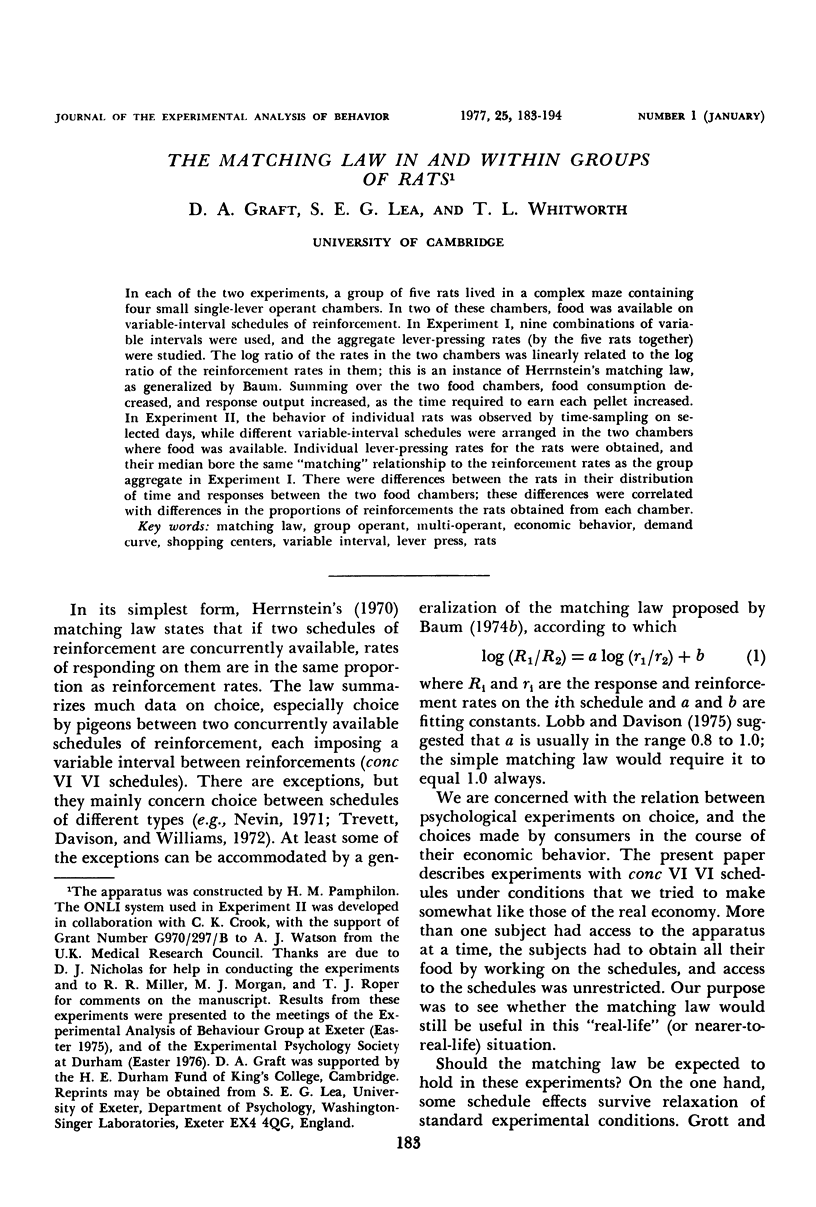
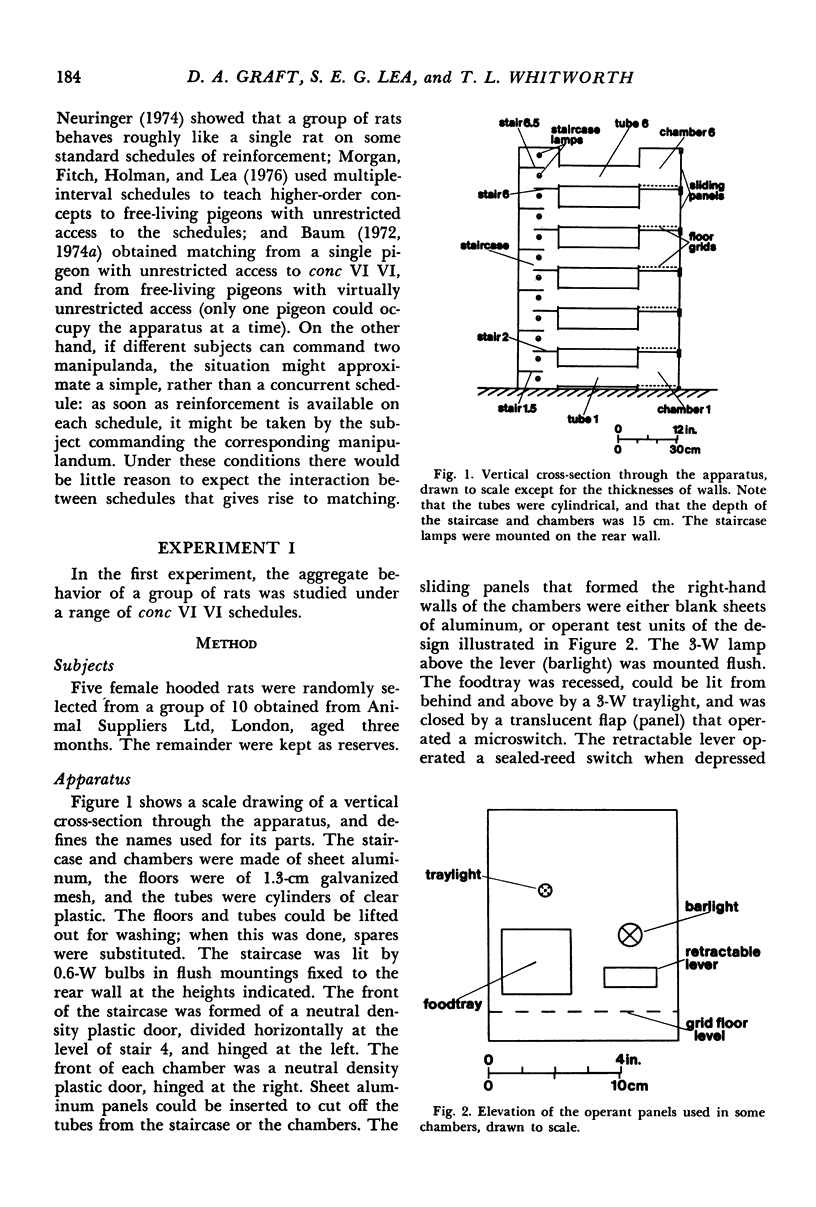
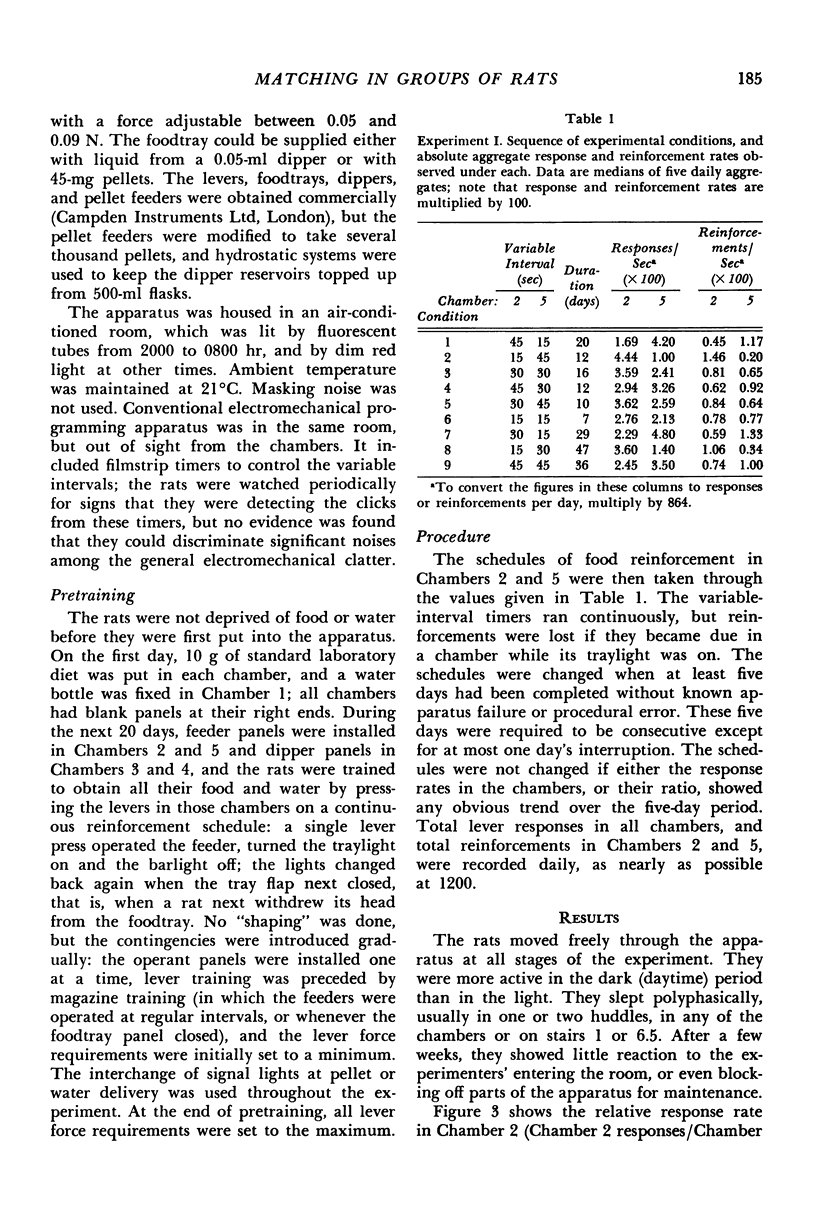
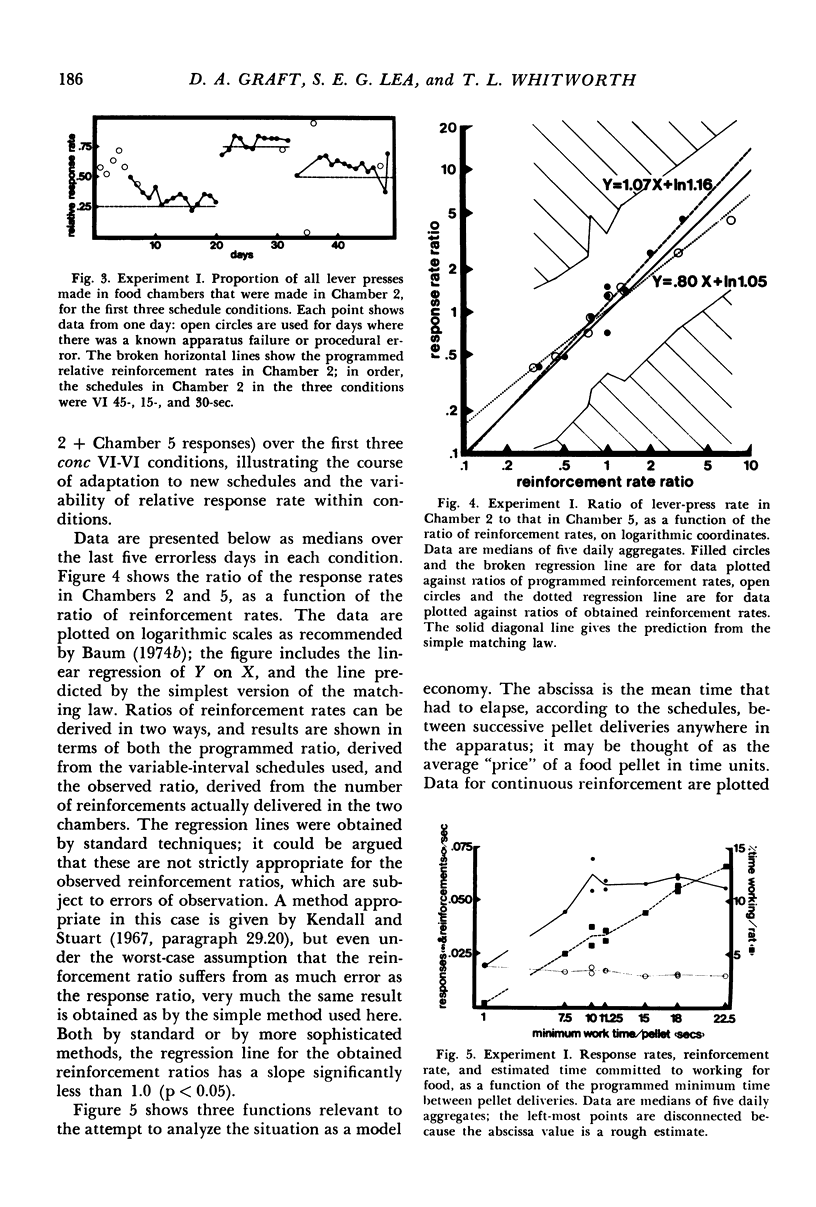
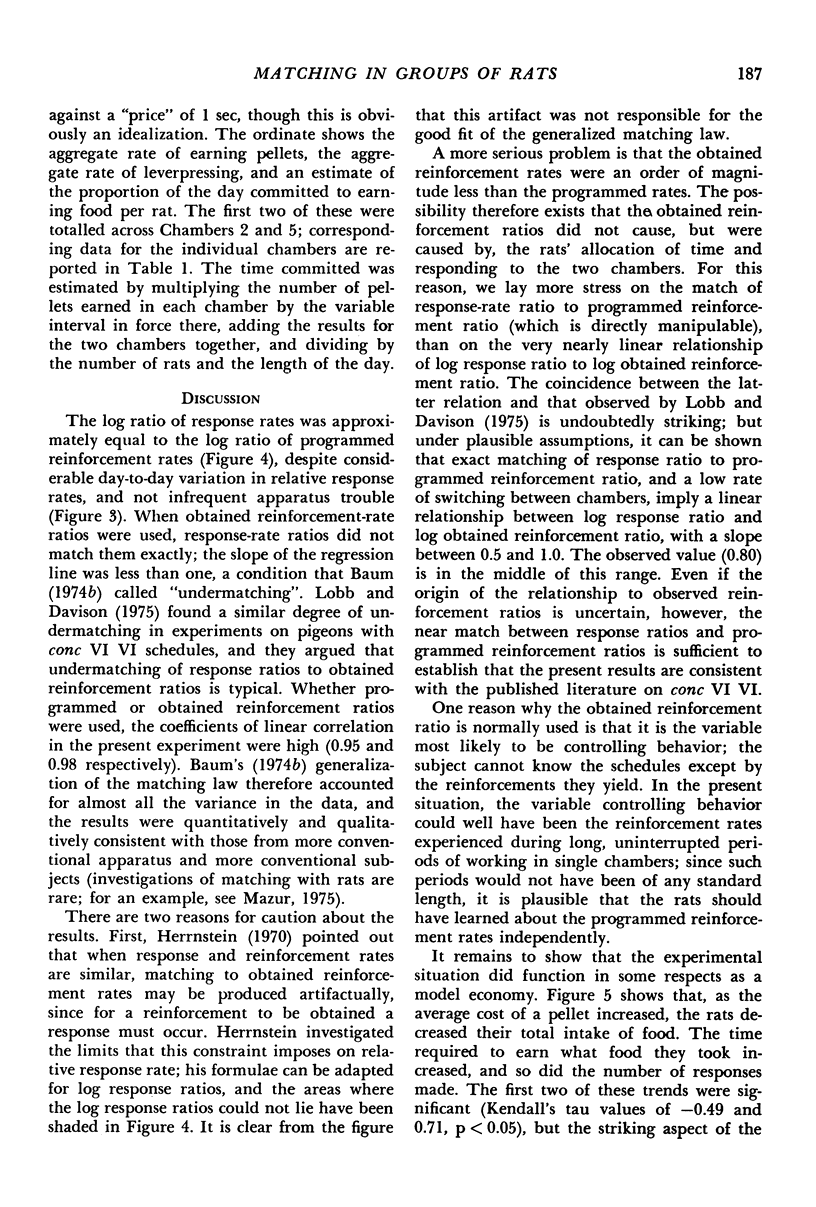
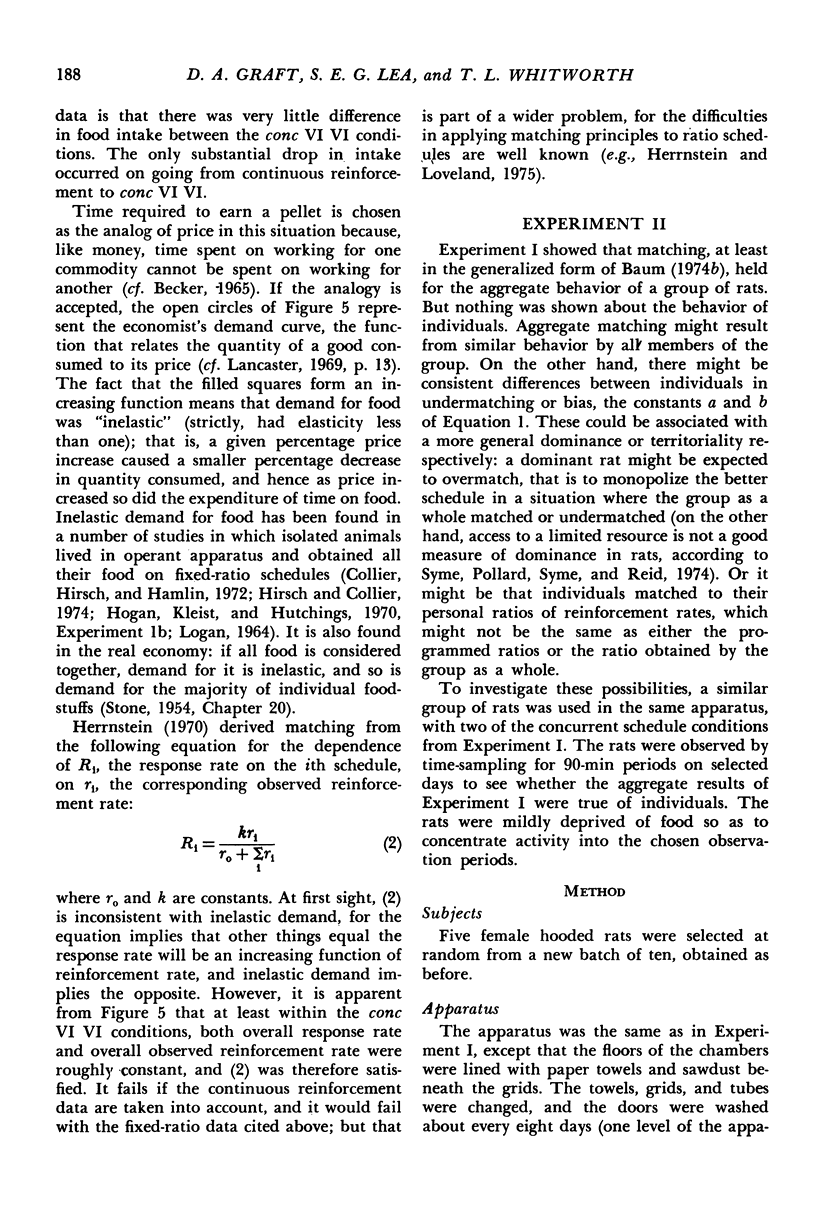
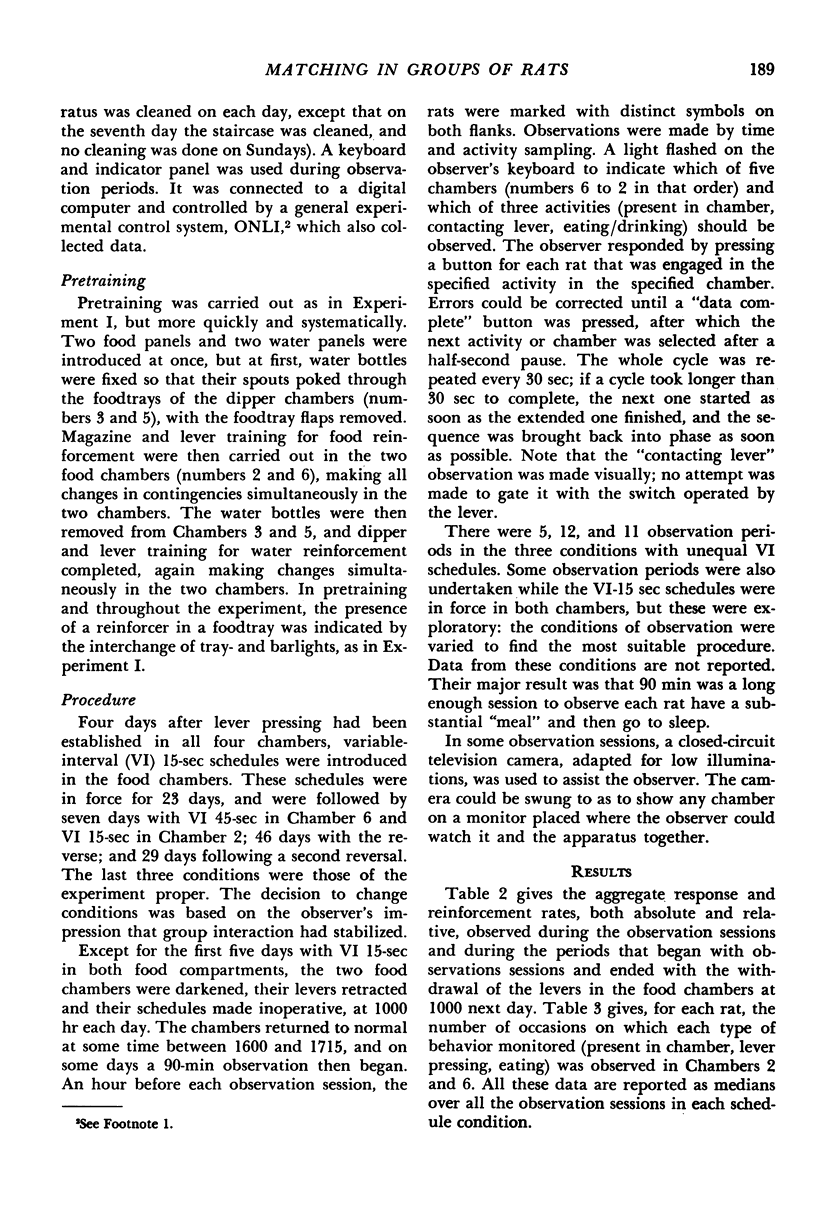
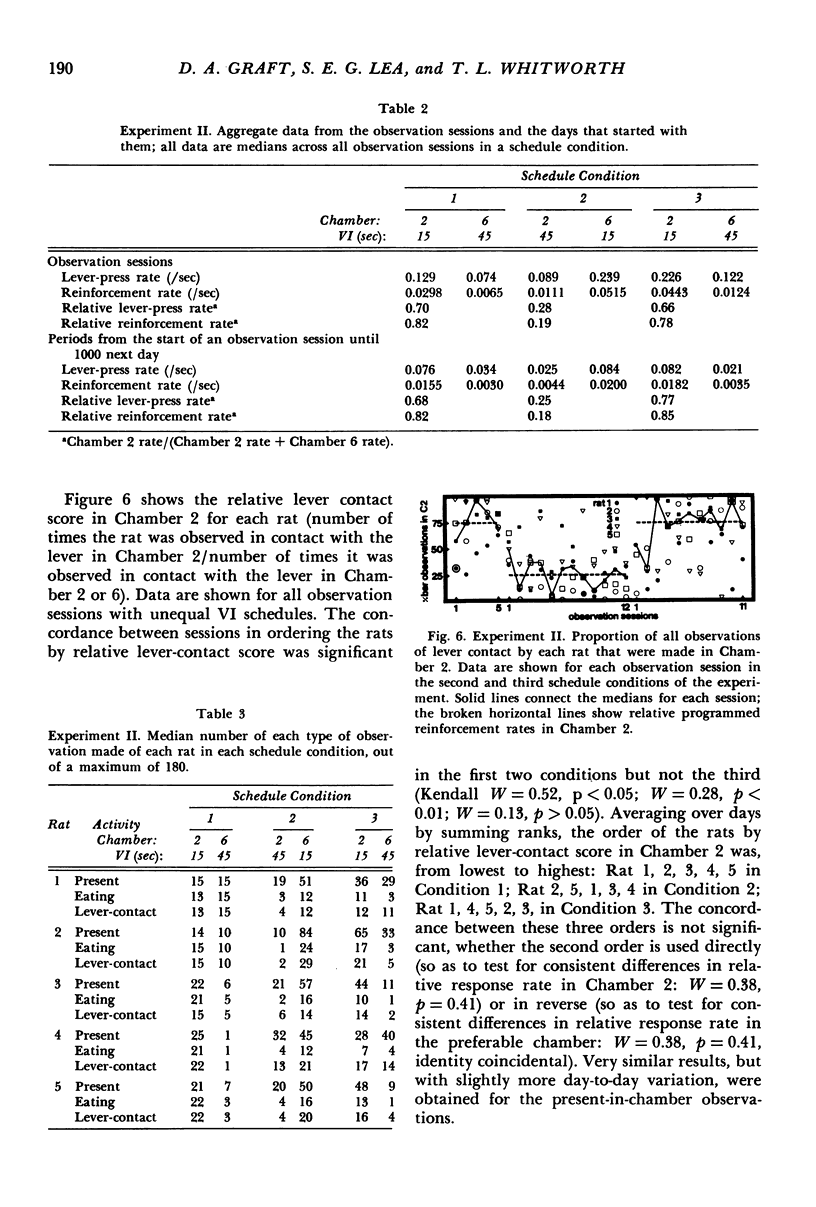
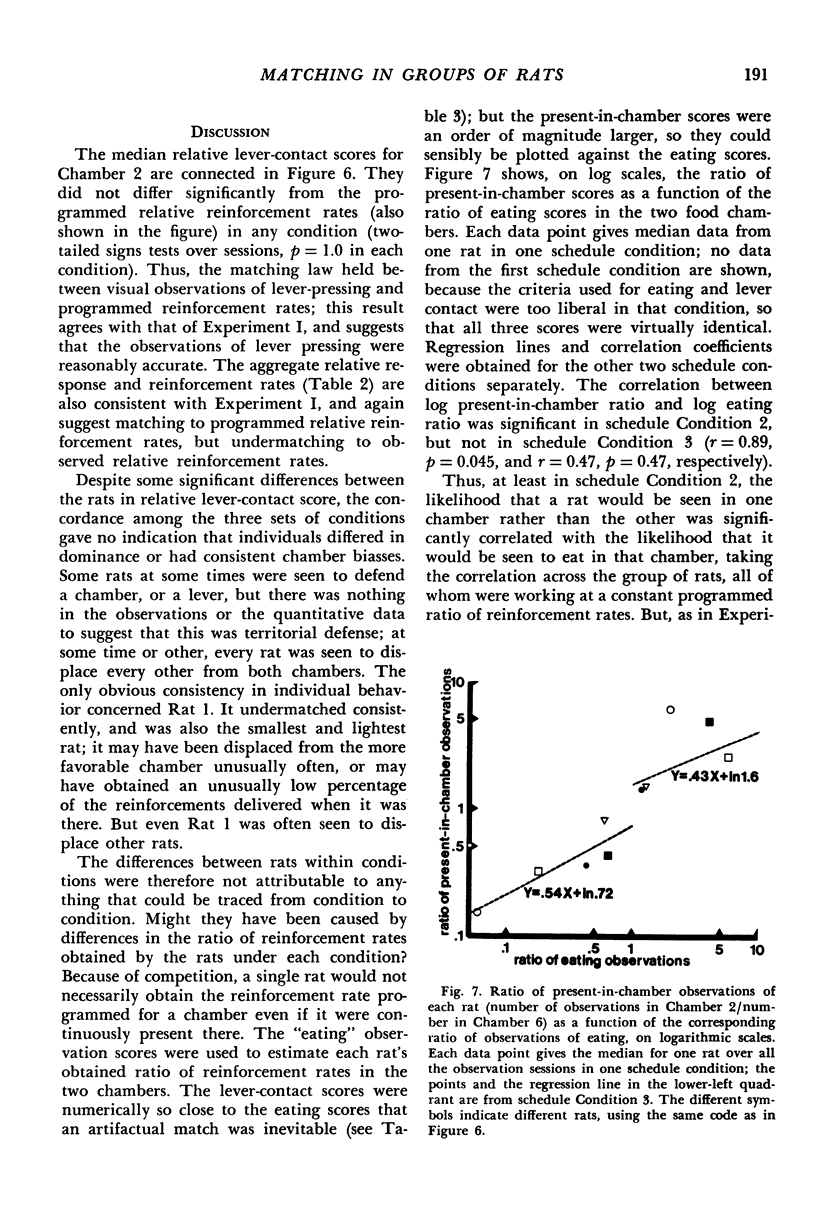
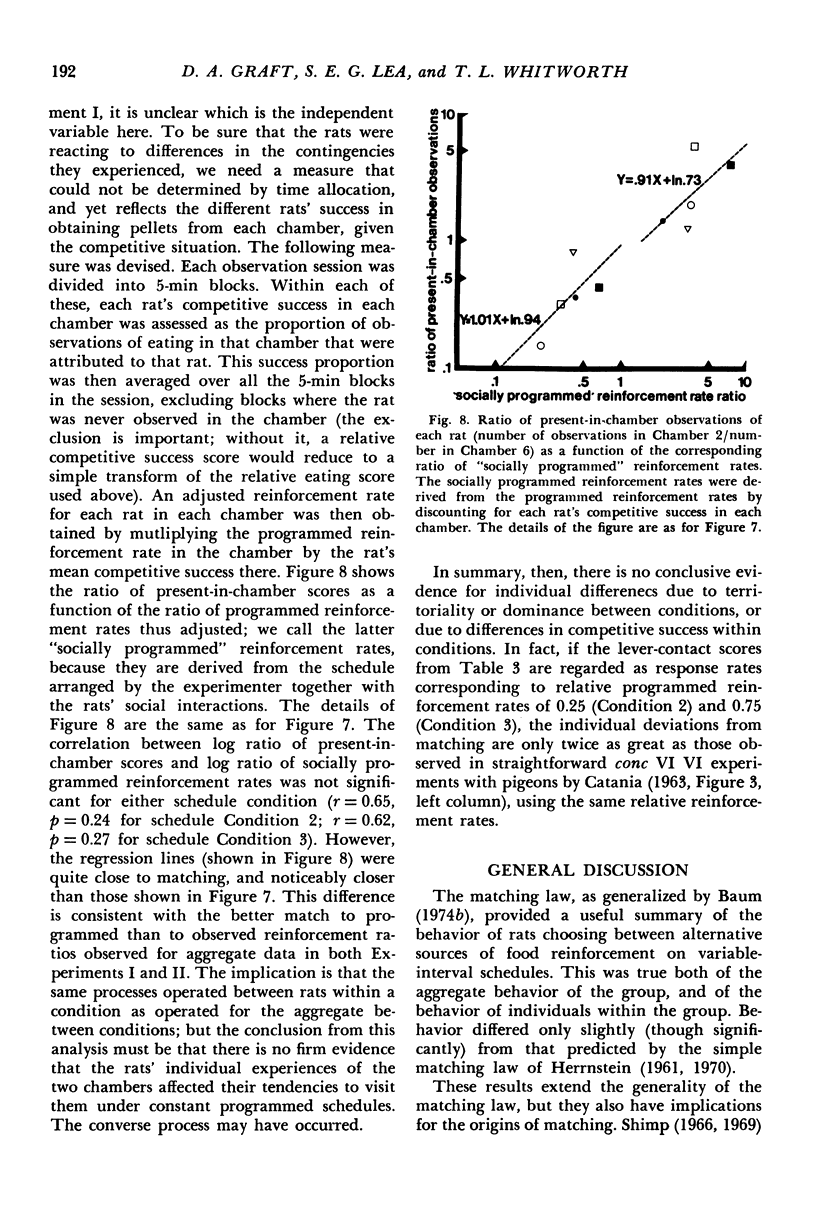
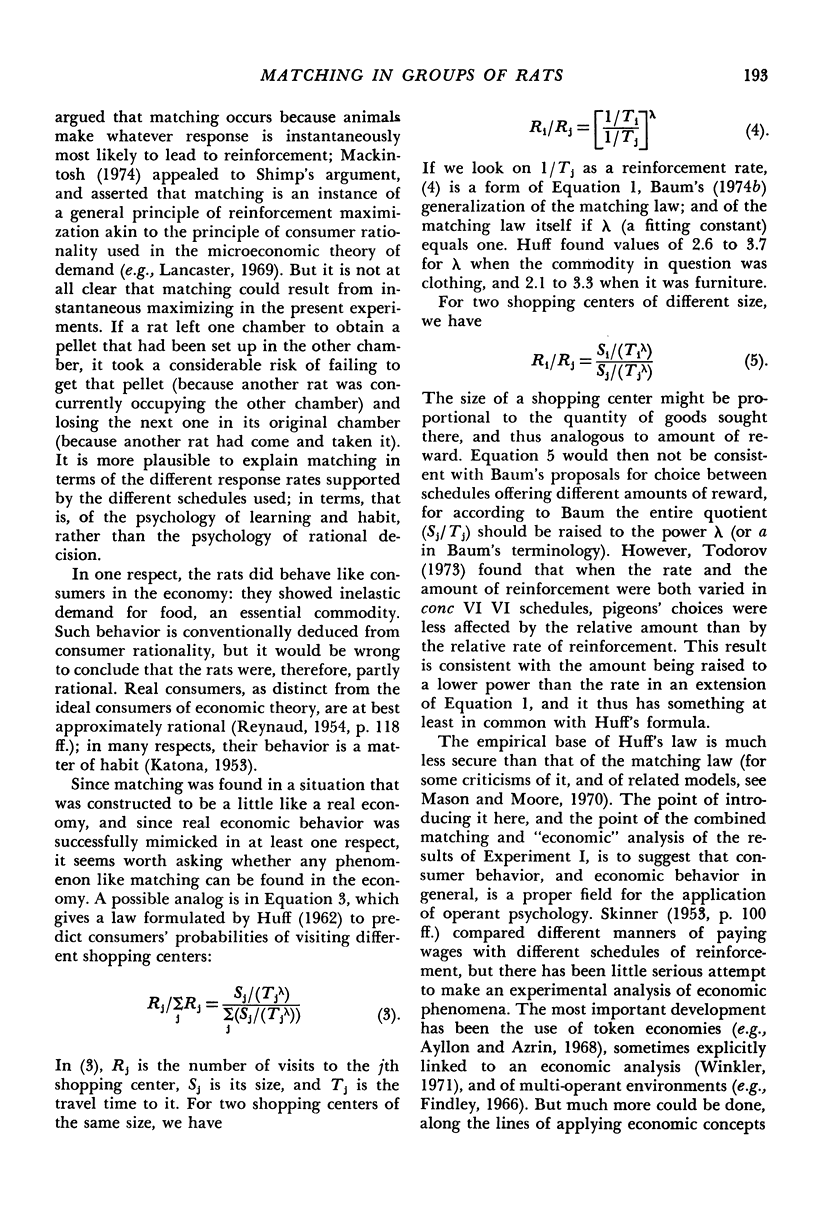
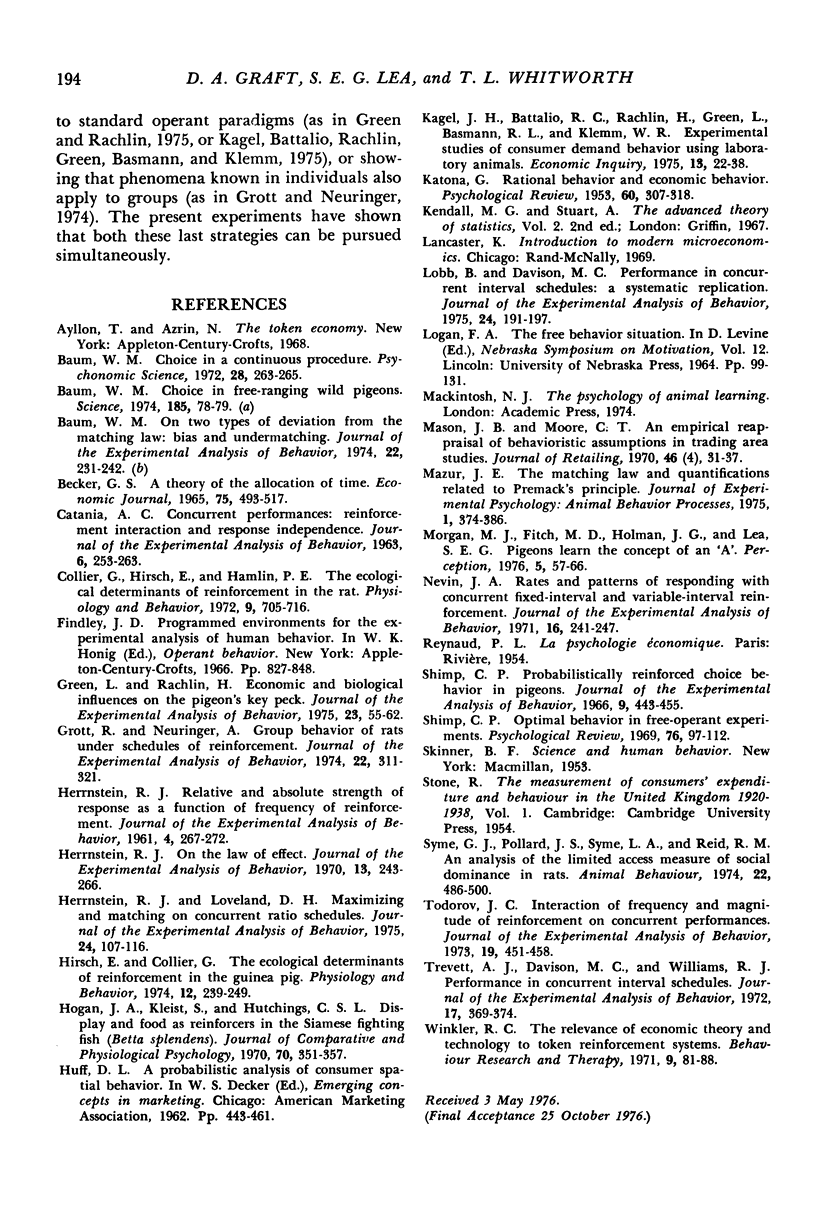
Selected References
These references are in PubMed. This may not be the complete list of references from this article.
- Baum W. M. Choice in free-ranging wild pigeons. Science. 1974 Jul 5;185(4145):78–79. doi: 10.1126/science.185.4145.78. [DOI] [PubMed] [Google Scholar]
- Baum W. M. On two types of deviation from the matching law: bias and undermatching. J Exp Anal Behav. 1974 Jul;22(1):231–242. doi: 10.1901/jeab.1974.22-231. [DOI] [PMC free article] [PubMed] [Google Scholar]
- CATANIA A. C. Concurrent performances: reinforcement interaction and response independence. J Exp Anal Behav. 1963 Apr;6:253–263. doi: 10.1901/jeab.1963.6-253. [DOI] [PMC free article] [PubMed] [Google Scholar]
- Collier G., Hirsch E., Hamlin P. H. The ecological determinants of reinforcement in the rat. Physiol Behav. 1972 Nov-Dec;9(5):705–716. doi: 10.1016/0031-9384(72)90038-8. [DOI] [PubMed] [Google Scholar]
- Green L., Rachlin H. Economic and biological influences on a pigeon's key peck. J Exp Anal Behav. 1975 Jan;23(1):55–62. doi: 10.1901/jeab.1975.23-55. [DOI] [PMC free article] [PubMed] [Google Scholar]
- Grott R., Neuringer A. Group behavior of rats under schedules of reinforcement. J Exp Anal Behav. 1974 Sep;22(2):311–321. doi: 10.1901/jeab.1974.22-311. [DOI] [PMC free article] [PubMed] [Google Scholar]
- HERRNSTEIN R. J. Relative and absolute strength of response as a function of frequency of reinforcement. J Exp Anal Behav. 1961 Jul;4:267–272. doi: 10.1901/jeab.1961.4-267. [DOI] [PMC free article] [PubMed] [Google Scholar]
- Herrnstein R. J., Loveland D. H. Maximizing and matching on concurrent ratio schedules. J Exp Anal Behav. 1975 Jul;24(1):107–116. doi: 10.1901/jeab.1975.24-107. [DOI] [PMC free article] [PubMed] [Google Scholar]
- Herrnstein R. J. On the law of effect. J Exp Anal Behav. 1970 Mar;13(2):243–266. doi: 10.1901/jeab.1970.13-243. [DOI] [PMC free article] [PubMed] [Google Scholar]
- Hirsch E., Collier G. Ecological determinants of reinforcement in the guinea pig. Physiol Behav. 1974 Feb;12(2):239–249. doi: 10.1016/0031-9384(74)90178-4. [DOI] [PubMed] [Google Scholar]
- KATONA G. Rational behavior and economic behavior. Psychol Rev. 1953 Sep;60(5):307–318. doi: 10.1037/h0060640. [DOI] [PubMed] [Google Scholar]
- Lobb B., Davison M. C. Performance in concurrent interval schedules: a systematic replication. J Exp Anal Behav. 1975 Sep;24(2):191–197. doi: 10.1901/jeab.1975.24-191. [DOI] [PMC free article] [PubMed] [Google Scholar]
- Morgan M. J., Fitch M. D., Holman J. G., Lea E. G. Pigeons learn the concept of an "A". Perception. 1976;5(1):57–66. doi: 10.1068/p050057. [DOI] [PubMed] [Google Scholar]
- Nevin J. A. Rates and patterns of responding with concurrent fixed-interval and variable-interval reinforcement. J Exp Anal Behav. 1971 Sep;16(2):241–247. doi: 10.1901/jeab.1971.16-241. [DOI] [PMC free article] [PubMed] [Google Scholar]
- Shimp C. P. Probabilistically reinforced choice behavior in pigeons. J Exp Anal Behav. 1966 Jul;9(4):443–455. doi: 10.1901/jeab.1966.9-443. [DOI] [PMC free article] [PubMed] [Google Scholar]
- Todorov J. C. Interaction of frequency and magnitude of reinforcement on concurrent performances. J Exp Anal Behav. 1973 May;19(3):451–458. doi: 10.1901/jeab.1973.19-451. [DOI] [PMC free article] [PubMed] [Google Scholar]
- Trevett A. J., Davison M. C., Williams R. J. Performance in concurrent interval schedules. J Exp Anal Behav. 1972 May;17(3):369–374. doi: 10.1901/jeab.1972.17-369. [DOI] [PMC free article] [PubMed] [Google Scholar]
- Winkler R. C. The relevance of economic theory and technology to token reinforcement systems. Behav Res Ther. 1971 May;9(2):81–88. doi: 10.1016/0005-7967(71)90064-7. [DOI] [PubMed] [Google Scholar]


